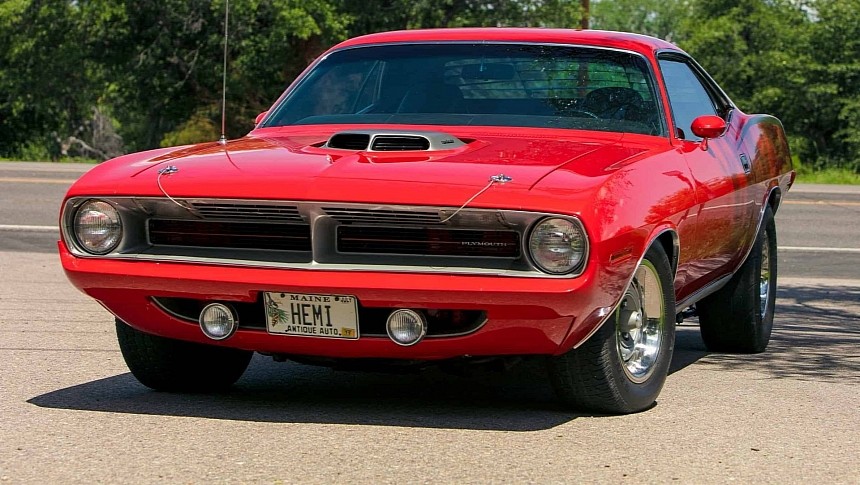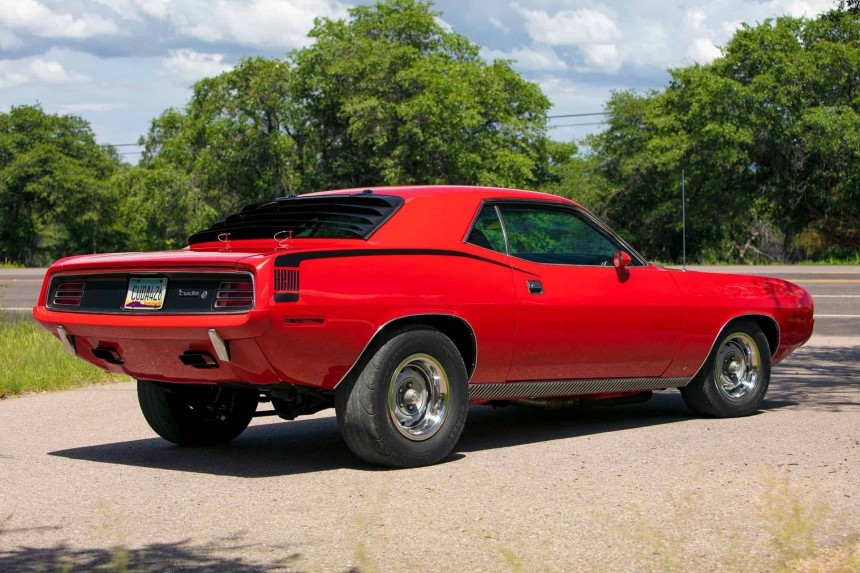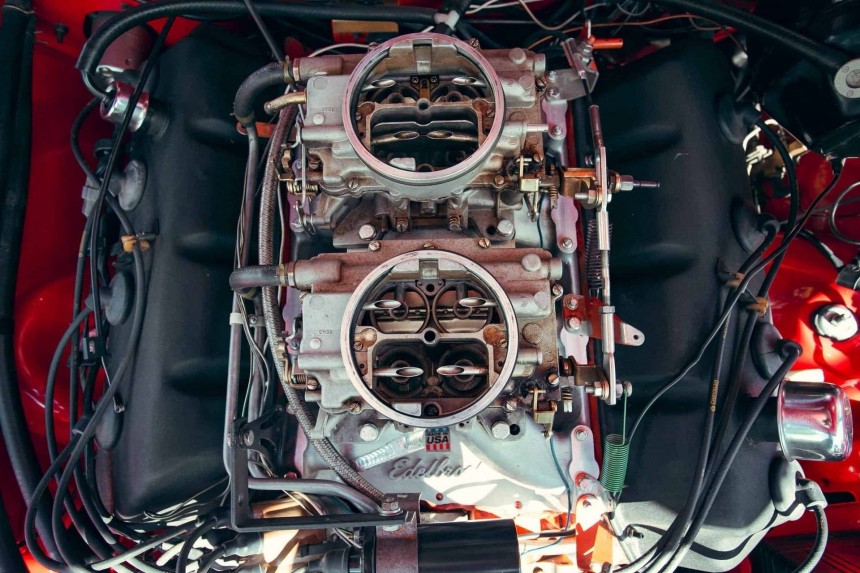Here’s something we don’t stumble across every day: a real 1970 badass hemicuda that’s not a 426 anymore. The backstory is mostly obscure, but the owner wants $200,000 for it, although it’s so far off the old block that it’s hardly worthy of its hemispherical nobility title anymore.
The Barracuda made a spectacular comeback in 1970, taking the 426 cubic inch (7.0-liter) engine in custody after seven long years since the nameplate surfaced (pun intended) onto Planet Piston. The new Plymouth automobile debuted the pony car segment on April 1, 1964 (beating Ford’s Mustang by two weeks and two days). Sadly, the stars aligned for the wild stallion instead of the voracious fish, and the rest is history.
In 1966, Chrysler debuted another great signature product, the Street HEMI, and Plymouth got the lion’s share. Until it was retired at the end of 1971, the famous elephant engine was used in more Belvederes, GTXs, Road Runners, and ‘Cudas than in Chargers, Coronets, Challengers, and other Dodges.
In Barracuda’s case, the HEMI was a short-lived affair since it lasted for two years (a fate shared by the Challenger, the ‘Cuda’s twin cousin who came about and went away together with the reinvented Plymouth). In 1970, the Barracuda debuted its third generation but had nothing in common with its predecessors.
The new E-body platform – designed specifically for the two icons, the ‘Cuda and the Challenger – allowed the car to accommodate the big-blocks that were impossible to install in the cramped engine bay of the A-body. Unfortunately, the pretentious second-generation HEMI fell victim to the Clean Air Act and insurance premiums, and it died after two short years.
The legendary ‘hemicuda’ medal of distinction was awarded to 666 of the muscle Plymouths built for the 1970 model year (hell knows if the production number was a coincidence or just a subtle and deeply ironic nod at the apocalypse on wheels that Chrysler had just unleashed). The following year, production collapsed to 114, so, understandably, some of them are very precious collectibles nowadays. All the more so considering that not so many are still around, and original examples are downright stratospherically expensive.
With prices going deep into seven-figure territory for the survivors, the restored examples don’t go for cheap, either. However, this particular car we feature here is a blunt contradiction to this paradigm. The coveted Plymouth was born with a 426 HEMI, a four-speed Super Track Pack with 4.10 gears, and a Sure Grip differential.
According to the selling ad, the body has only 40,000 miles on it (64,000 kilometers). I wish it were a typo, but it isn’t: it’s the mileage of the body – or what’s left original of it, anyway – and not of the engine. We are not told what happened to the original V8 and its hemispherical combustion chamber heads, but this Rally Red hardtop now boasts a 472-incher under the shaker hood.
The air grabber is also a reproduction with New Old Stock parts (but the car did have one originally, being a HEMI), but the critical aspects lay underneath. The big engine (7.7 liters of it) makes north of 600 hp (608 PS) and 600 lb-ft (814 Nm), according to the seller, who stresses out the hydraulic lifters and the 10.5:1 compression ratio.
That’s a far cry from the original output of 425 hp and 490 lb-ft 431 PS, 664 Nm), and it’s up to someone with $200,000 to burn to decide if the mod does justice to a legendary name. Again, the owner mentions that the dual-quads were rebuilt and tuned for the new balanced and blueprinted motor, which is now 5,000 miles (8,000 km) away from new.
In 1966, Chrysler debuted another great signature product, the Street HEMI, and Plymouth got the lion’s share. Until it was retired at the end of 1971, the famous elephant engine was used in more Belvederes, GTXs, Road Runners, and ‘Cudas than in Chargers, Coronets, Challengers, and other Dodges.
In Barracuda’s case, the HEMI was a short-lived affair since it lasted for two years (a fate shared by the Challenger, the ‘Cuda’s twin cousin who came about and went away together with the reinvented Plymouth). In 1970, the Barracuda debuted its third generation but had nothing in common with its predecessors.
The legendary ‘hemicuda’ medal of distinction was awarded to 666 of the muscle Plymouths built for the 1970 model year (hell knows if the production number was a coincidence or just a subtle and deeply ironic nod at the apocalypse on wheels that Chrysler had just unleashed). The following year, production collapsed to 114, so, understandably, some of them are very precious collectibles nowadays. All the more so considering that not so many are still around, and original examples are downright stratospherically expensive.
With prices going deep into seven-figure territory for the survivors, the restored examples don’t go for cheap, either. However, this particular car we feature here is a blunt contradiction to this paradigm. The coveted Plymouth was born with a 426 HEMI, a four-speed Super Track Pack with 4.10 gears, and a Sure Grip differential.
The air grabber is also a reproduction with New Old Stock parts (but the car did have one originally, being a HEMI), but the critical aspects lay underneath. The big engine (7.7 liters of it) makes north of 600 hp (608 PS) and 600 lb-ft (814 Nm), according to the seller, who stresses out the hydraulic lifters and the 10.5:1 compression ratio.
That’s a far cry from the original output of 425 hp and 490 lb-ft 431 PS, 664 Nm), and it’s up to someone with $200,000 to burn to decide if the mod does justice to a legendary name. Again, the owner mentions that the dual-quads were rebuilt and tuned for the new balanced and blueprinted motor, which is now 5,000 miles (8,000 km) away from new.





































